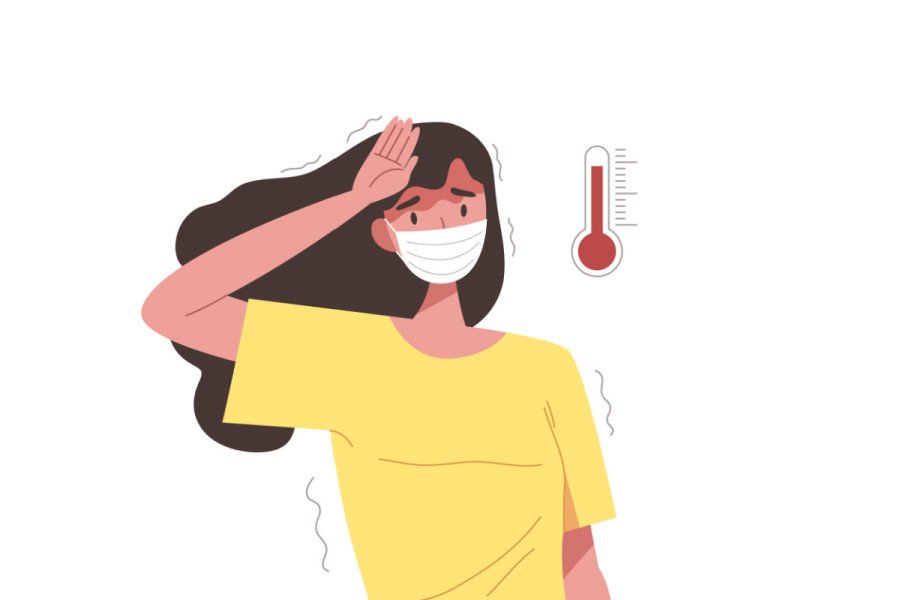When we think of a fever, it’s often linked to illness, infection, or the body’s natural response to fight off pathogens. But how does exposure to the sun fit into this equation? Can the sun cause or exacerbate fever, and what are the connections between sun exposure and body temperature? In this article, we will explore the relationship between fever and the sun, shedding light on common misconceptions, health risks, and preventive measures.
What is a Fever?
A fever is the body’s natural response to infection or illness, characterized by an elevation in body temperature above the normal range (around 98.6°F or 37°C). It is usually a sign that the immune system is fighting off invaders like bacteria or viruses. While fever itself is not harmful, it is a symptom that signals an underlying condition.
Causes of Fever
- Infections: The most common cause of fever is viral or bacterial infections, such as the flu or a cold.
- Inflammatory Conditions: Autoimmune diseases or inflammatory disorders can trigger fevers.
- Medications: Certain medications may induce fever as a side effect.
- Heat-Related Illnesses: Exposure to excessive heat, such as from the sun, can cause heat exhaustion or heat stroke, which may mimic the symptoms of fever.
How Does Sun Exposure Affect Body Temperature?
While fever is primarily linked to internal infections or conditions, sun exposure can influence body temperature in various ways. Spending too much time in the sun can lead to heat-related illnesses, including heat exhaustion and heat stroke, which cause the body’s temperature to rise abnormally.
Sun-Induced Conditions
- Heat Exhaustion: Prolonged exposure to high temperatures, especially in direct sunlight, can cause heat exhaustion. Symptoms include dizziness, excessive sweating, nausea, and a mild rise in body temperature.
- Heat Stroke: A more severe condition, heat stroke occurs when the body’s temperature regulation system fails. This can lead to a dangerously high fever (above 104°F or 40°C), confusion, and even loss of consciousness. Heat stroke is a medical emergency and requires immediate attention.
Fever vs. Sun Exposure: Key Differences
- Fever: Caused by internal factors such as infections or illness. It is the body’s way of responding to an underlying issue.
- Heat-Related Illness: Result of external factors like excessive sun exposure, which leads to a rise in body temperature due to the failure of the body’s cooling mechanisms.
Can the Sun Cause a Fever?
Technically, the sun does not cause a true fever since fever is defined as an internal process resulting from infection or illness. However, prolonged exposure to the sun can cause heat-related illnesses that elevate the body’s temperature, mimicking fever-like symptoms.
Preventing Heat-Related Illnesses
While fever is difficult to prevent due to its association with internal infections, there are effective ways to avoid heat-related conditions caused by the sun:
1. Stay Hydrated
Drinking plenty of water helps regulate body temperature and prevents dehydration, a common contributor to heat exhaustion and heat stroke.
2. Limit Sun Exposure
Avoid spending extended periods in direct sunlight, especially during peak hours (10 a.m. to 4 p.m.). Wear light, loose-fitting clothing and apply sunscreen with adequate SPF protection.
3. Rest in Cool Areas
If you start feeling overheated, move to a shaded or air-conditioned area to cool down. Take breaks often if you are working or exercising in hot environments.
4. Recognize Symptoms Early
Understanding the signs of heat-related illnesses, such as excessive sweating, dizziness, and nausea, can help prevent more severe conditions like heat stroke. If you suspect someone is experiencing heat stroke, seek immediate medical help.
Conclusion: Managing Fever and Sun Exposure
Although fever and sun exposure are different in origin and nature, both can lead to a dangerous rise in body temperature if not properly managed. While a fever typically indicates an underlying medical condition, prolonged exposure to the sun can cause heat-related illnesses that require urgent care. Taking preventive measures, like staying hydrated and avoiding excessive sun exposure, can protect your health during hot weather.
By being aware of the effects of sun exposure and understanding the symptoms of heat-related illnesses, you can enjoy sunny days safely and avoid serious health risks.
Scientific Sources
- Centers for Disease Control and Prevention (CDC) – “Heat-Related Illnesses and Safety Tips”
CDC Guide to Heat-Related Illnesses - Mayo Clinic – “Fever: Causes, Symptoms, and Treatment”
Mayo Clinic Fever Info - National Institutes of Health (NIH) – “Heat Exhaustion and Heat Stroke”
NIH on Heat Stroke
By understanding the differences between fever and sun exposure, you can take the necessary steps to protect yourself from the harmful effects of heat while maintaining overall wellness.




